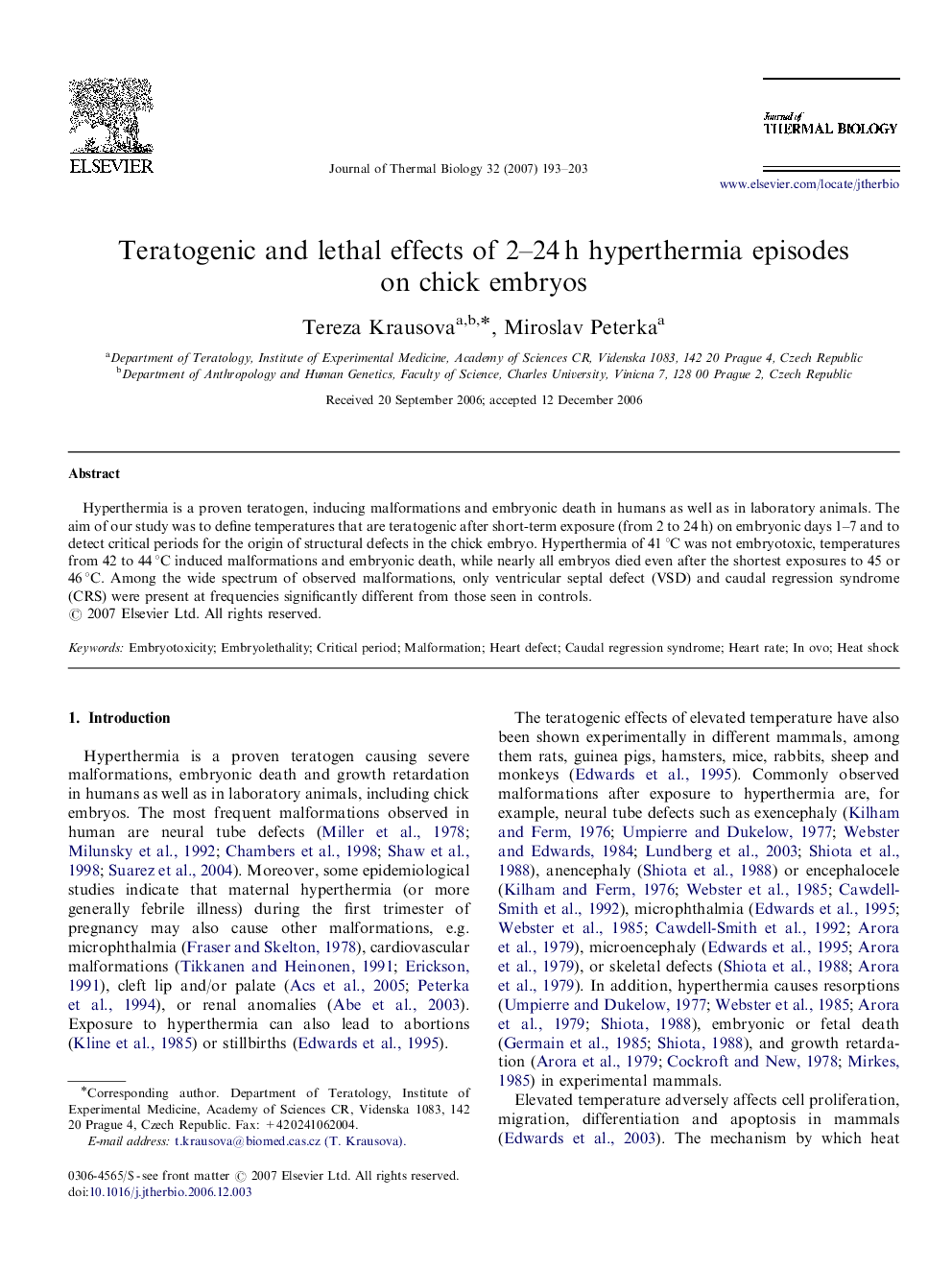| Article ID | Journal | Published Year | Pages | File Type |
|---|---|---|---|---|
| 2843802 | Journal of Thermal Biology | 2007 | 11 Pages |
Abstract
Hyperthermia is a proven teratogen, inducing malformations and embryonic death in humans as well as in laboratory animals. The aim of our study was to define temperatures that are teratogenic after short-term exposure (from 2 to 24 h) on embryonic days 1–7 and to detect critical periods for the origin of structural defects in the chick embryo. Hyperthermia of 41 °C was not embryotoxic, temperatures from 42 to 44 °C induced malformations and embryonic death, while nearly all embryos died even after the shortest exposures to 45 or 46 °C. Among the wide spectrum of observed malformations, only ventricular septal defect (VSD) and caudal regression syndrome (CRS) were present at frequencies significantly different from those seen in controls.
Keywords
Related Topics
Life Sciences
Agricultural and Biological Sciences
Agricultural and Biological Sciences (General)
Authors
Tereza Krausova, Miroslav Peterka,
